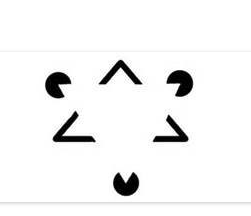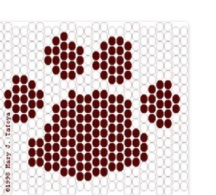Using Gestalt Theory in Language Learning
- Jordan Stackhouse
- Feb 9, 2022
- 4 min read
Greetings friends, colleagues and language aficionados! We hope you are well and facing 2022 with unbridled optimism! This month we want to share some useful research into one of the principles that underpins many of the most popular and effective teaching methods we teach in our dynamic, 5-day TESOL Certification/Language Instructor Course. We hope you enjoy the read!

It is clear that language is highly structured, both explicitly and implicitly. This provides the scaffolding that learners rely on, even when they cannot initially understand what the structure is or how it's used in the language. In June of 2021, Haike Jacobs and Hans Buffart published an article entitled, ”A Gestalt Theory Approach to Structure in Language”. * Regarding language structure, they explain: “…every utterance has both a morphosyntactic structure, conveying what the expression means, as well as phonological structure, how the utterance is pronounced.” Nothing to disagree with there. In their paper they sought to prove that, when Gestalt Theory is applied to language acquisition, teachers and learners alike align their efforts with how the brain prefers to learn, resulting in faster mastery of the target language.
In our opinion, their research gives credence to the understanding that all humans are born with an innate “Universal Grammar." What do we mean by universal grammar? As we start down the path of discovery of learning a new language - or even the grammatical labels and rules of our native tongue, we gradually perceive the structure of that language. However, to our brains, is what we are learning completely new? Or, is our brain merely recognizing patterns, similarities and differences that it has already catalogued from its exposure to our native tongue? I would argue that every “Aha” moment of clarity and understanding when learning a new language, is piggy-backing an established understanding from the learner’s native language. Jacobs and Buffart sum it up by saying that, “humans build structures." This would mean that language learning is predominantly something that takes place from the inside, out. All of the Gestalt Laws try to explain how we perceive objects in our environment. Thus, there is a huge advantage to applying Gestalt Theory to learning or teaching a language.
What is Gestalt Theory and how can we apply it in the language classroom?
In short, Gestalt Theory is the belief that the whole is different that the sum of its parts. Cameron Chapman breaks it down this way: “In the simplest terms, gestalt theory is based on the idea that the human brain will attempt to simplify and organize complex images or designs that consist of many elements, by subconsciously arranging the parts into an organized system that creates a whole, rather than just a series of disparate elements.”** When applied to learning a new language, this means that, from the moment a language student starts learning, his/her brain pulls up the structure of his native language and the structures of other languages he/she knows. Then, construction of a new language structure is initiated. These structures are not laid out two-dimensionally, side by side, as it were; but rather, they appear in the brain simultaneously. Once sufficient fluency is achieved, the language structures, while separate, blend - similar to the many layers on a canvas that compose a complex painting. Cameron adds, “The human brain is exceptionally good at filling in the blanks in an image and creating a whole that is greater than the sum of its parts. It’s why we see faces in things like tree leaves or sidewalk cracks.”
How does LEXICA’S 5-day TESOL Certification/Language Instructor course employ the principles of Gestalt Theory?
Here are three of the six laws that embody Gestalt Theory. For the benefit of those whom have taken our course, we will showcase some of the methods that employ these principles. (For those that haven’t joined us yet…, what are you waiting for???😉)
Gestalt Laws

1) Proximity: This law states that a viewer of a grouping of objects tends to organize what is in front of them based on their location to one another.
Course Methods: Bilingual Exercise, Dual Text Translation, Chunking/Clusters
The first two methods visually place the target language and the vernacular in close proximity to each other. This stimulates the brain to make deductions, draw conclusions and fill in the missing pieces of this developing language structure. Chunking/Clusters speeds up the brains natural desire to group things by introducing vocabulary and its implicit grammar rules as ready formed collections of commonly used speech.

2) Similarity: This principle suggests that we naturally group similar items together based on elements like colour, size, or orientation.
Course Methods: Functional Transliteration, Flash Cards, Mnemonic Encoding, Use of Video
These methods rely on the dominant role of vision. By associating visual elements of the 1st language, including the orientation of transcribed speech as in the case of Functional Transliteration, with the new vocabulary of the target language, the brain has more handles on which to hang long term memory, thus optimizing the learning process.

3) Closure: This suggests that elements that form a closed object will be perceived as a group. We will even fill in missing information to create closure and make sense of an object.
Course Methods: Grammar Mapping, Dictation, Bilingual Exercise, Dual Text Translation, Mnemonic Encoding, Guided Discovery, Passive Exposure
In all these methods, clues are presented either in the form of text, dynamic gestures, or vivid word pictures. The brain takes the bait and with determination, sets out to formulate solutions to fulfill its need to understand and create cognitive closure.
We hope you have enjoyed this glimpse into some exciting applications of Gestalt Theory in language acquisition. This is just a sampling of the fascinating ways that we help people become extraordinary language teachers. Why not capitalize on the fact that you already know a language - a language that thousands, millions and even a billion people out there really want to learn? Join us for our dynamic TESOL/Language Instructors Certification course. We would love to see you there!






